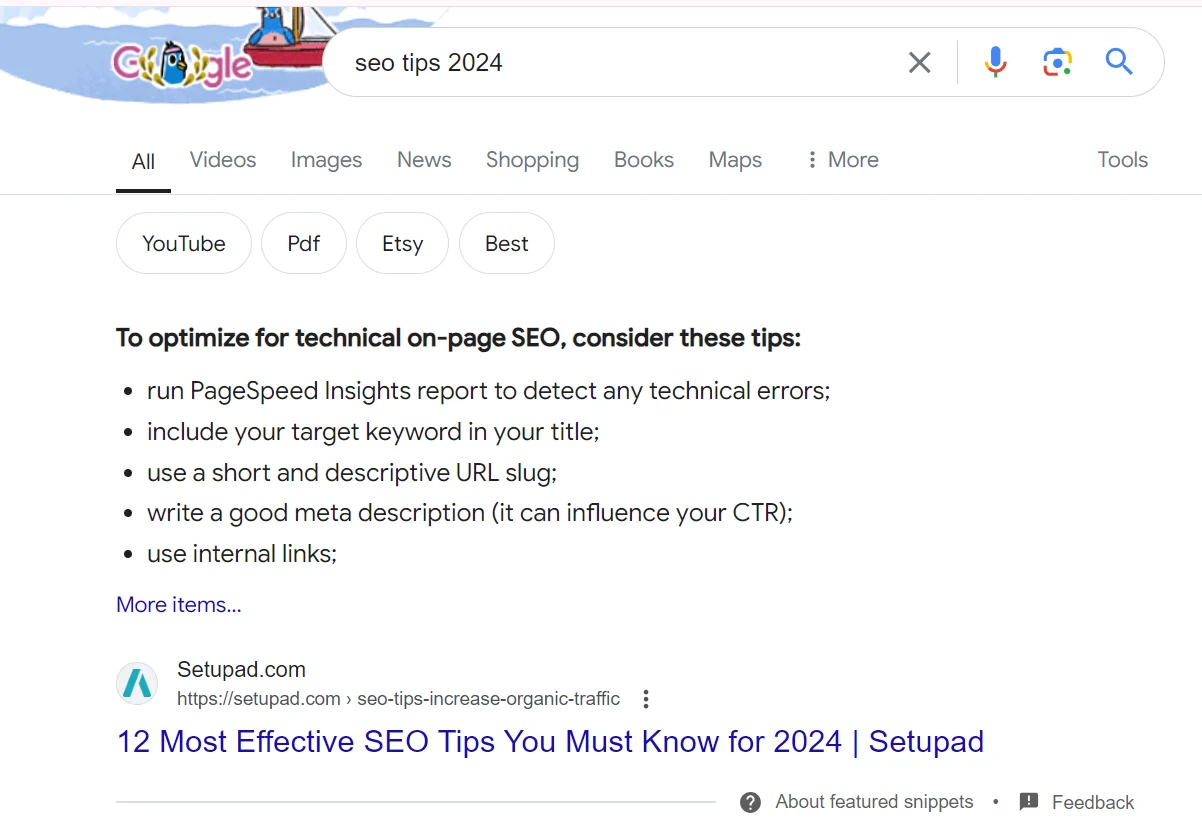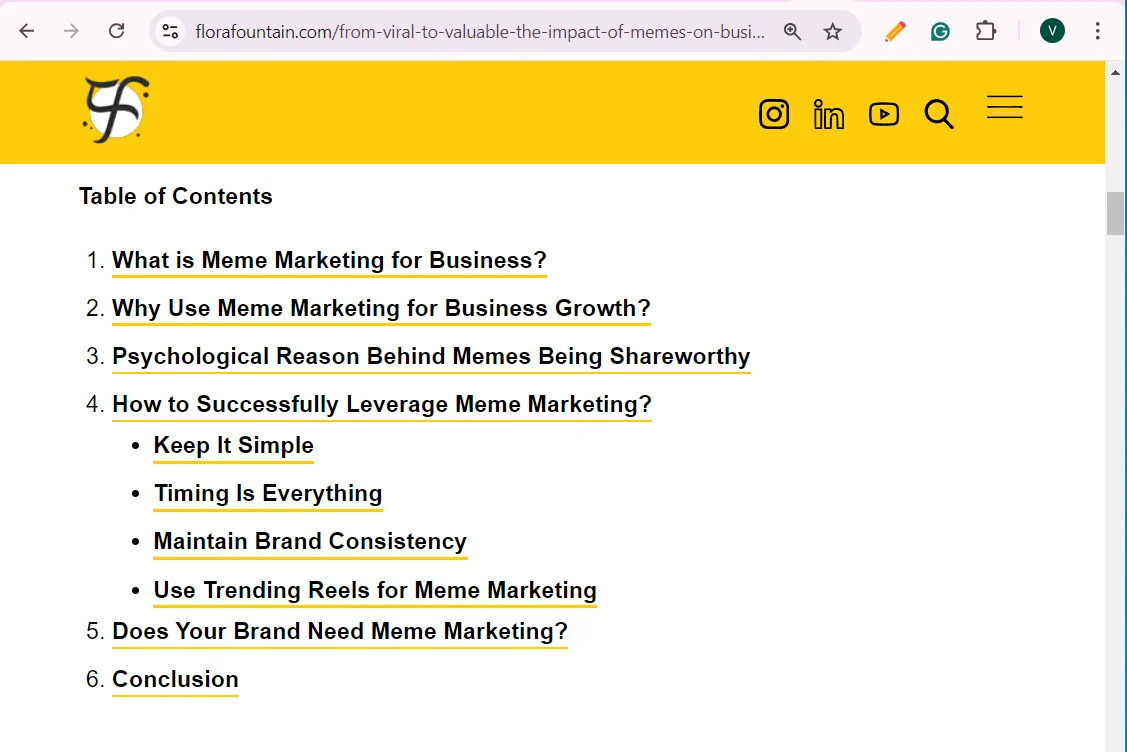
You put hours into doing keyword research, creating high-quality content and optimising your website. However, your site remains stubbornly stuck on 2nd or 3rd page of Google’s search results.
Frustrating, isn’t it? You’re doing everything by the book, but that coveted top spot feels like a distant dream.
The good news is that being stuck on page 3 or even page 4 isn’t a dead end—it’s an opportunity to reassess your strategy and make targeted improvements that can move your site to the top.
Believe it or not, we as an SEO company have also been there. We have made mistakes and learnt from that. We will talk to you about those mistakes here and some proven techniques to improve search result rankings.
So, let’s first understand why your website might be stuck at the bottom. Then we will offer actionable tips to correct the same.
Table of Contents
- Why Your Website is Stuck on Page 3
- Keyword Competition Might Be Fierce
- Your On-Page SEO Needs Fine-Tuning
- Your Content is High Quality But Lacks Relevance
- Your Website is Not Optimised for Mobile Use
- Technical SEO Issues Might Affect Your Website
- Competitor Activity
- Proven Strategies to Improve Your Rankings
- In Conclusion
- Frequently Asked Questions
Why Your Website is Stuck on Page 3
Ranking on page 3 means you’re doing a lot of things right, but you’re still missing out on a few that’ll give a final push to climb higher. Below are some common reasons why your website might not be ranking as well as you’d like:
1. Keyword Competition Might Be Fierce
If you are targeting really broad keywords, the competition may be really high. Because you’re up against well-established sites with high domain authority and a wealth of backlinks.
So, instead of going head-to-head with the giants, focus on long-tail keywords. These are more specific phrases that may have lower search volume but are less competitive and often have higher conversion rates. For example, instead of targeting “digital marketing,” you could target “digital marketing strategies for small businesses.”
2. Your On-Page SEO Needs Fine-Tuning
While you may have covered the basics, you might have missed the small details like optimising titles, meta descriptions, headers and content structure. If these aren’t fully optimised, it could be holding your website back.
So implementing the following SEO tips might make a huge difference :
- Incorporate target keywords naturally into titles, headers and meta descriptions.
- Optimise images with appropriate alt text.
- Give internal links in a way that doesn’t disturb the reader.
3. Your Content is High Quality But Lacks Relevance
High-quality content is a broad term that often leads to confusion. It’s not just about writing well; it’s about creating content that’s comprehensive, relevant and valuable to your audience. If your content isn’t hitting these marks, this could result into your site getting stuck.
So, while focusing on the writing part, analyse whether it matches the user’s intent. To do this, you can check out the competitor’s website and see which questions they are answering.
As the website is ranking, it’s clear that people are finding what they want from that website. Now, you just need to figure out what you can add to that information and write accordingly.
4. Your Website is Not Optimised for Mobile Use
The majority of people use Google and that too on their mobile devices to search for something. That’s why Google’s market share for mobile searches is approximately 95.17%.
Needless to say, your website should work fine on mobile. There’s no room for a slow or difficult-to-navigate website. So, do this first. Hire web developers or reach out to web development company to make your website mobile-friendly. If you are neglecting this. It’s likely affecting your rankings.
5. Technical SEO Issues Might Affect Your Website
Sometimes, the problem lies under the hood. Technical SEO issues, such as broken links, crawl errors or poor site architecture can prevent your site from ranking higher.
To check if everything’s okay with your technical SEO, use Google Search Console. It allows you to track your site’s indexing status, identify crawl errors (like 404 pages or server errors) and monitor other technical issues that might affect your SEO.
6. Competitor Activity
Sometimes, your competitors are simply outpacing you in their SEO efforts. They might be building more backlinks, producing more content or optimising better for the latest SEO trends.
And guess what, that’s okay. What your competitors do is not in your control. However, you can improve your SEO efforts at your own pace.
If you are willing to go aggressive, that’s okay too. In the end — it depends on your long-term goals and of course your bandwidth.
However, remember this — ranking on top takes time. While the time differs according to target keywords, industry, competition etc, our SEO team says it takes at least 4 to 6 months to rank higher.
Proven Strategies to Improve Your Rankings
Now that you know what could be the possible reasons why your SEO is not working, the next step is to correct it. Additionally, use these advanced SEO tips and tricks that can give your site the boost it needs to leap from page 3 to page 1.
1. Re-optimise Existing Content to Match Search Intent
Your existing content is a goldmine. By updating and re-optimising it, you can give your site the boost it needs.
Start by identifying high-performing content that’s slipped in rankings and understand the search intent of the user.
Address it in the optimised content. To make the execution seamless and keep your content relevant, hire a content writing agency.
Additionally, use new keywords. Try to target more long-tail keywords. Ensure the updated content is aligned with the latest SEO trends.
2. Optimise for Featured Snippets and People Also Ask
Google shows a small snippet of text in a box so that a user gets a quick answer. It’s called a featured snippet. It could be in a box, in a table or in the “People also Search Section”.

You don’t necessarily need to rank higher to get featured here. Just search your keywords and see if there’s a featured snippet for that term.
Then identify common questions related to your target keywords and structure your content to answer them concisely. Use bullet points, numbered lists and direct answers to improve your chances of being featured.
An article by Semrush suggests that — if your page gets a featured snippet, the click-through rate of your site increases significantly.
So, it’s a great opportunity to increase traffic on your site and boost your ranking.
3. Focus on Reducing Bounce Rate
Text-heavy pages can sometimes turn users away. Adding multimedia elements like videos, infographics and interactive content can make your pages more engaging and reduce bounce rates.
On top of it, ensure that there’s a clear structure throughout the page. If you look at our blogs, we divide all the information and divide our outline into H1, H2s and H3s.
The screenshot below is another example of how we give a table of contents in the beginning to make the blog skimmable for readers.

Once they read it — they will know what’s there in the blog and their interest can automatically spike up. You should also use a lot of bullet points to enhance the user’s reading experience.
4. Leverage Internal Linking if You Cannot Build Backlinks
Creating backlinks often requires publishing research, studies etc. Not everyone has the resources to do that. Reaching out to authority sites for building backlinks can be expensive.
So, what you can do here is leverage internal linking till you don’t have the resources to build high-quality backlinks. It is a powerful yet often underutilised SEO strategy.
By strategically linking related pages on your site, you can distribute link equity, improve the user experience and help search engines crawl and index your site more effectively.
Here’s how you can implement it :
- Identify your most authoritative pages (often your homepage or high-traffic blog posts) and use them to pass link equity to other pages.
- Create a clear internal linking structure that guides users (and search engines) through your site logically.
- Regularly audit your internal links to ensure there are no broken links.
5. Optimise Your Content for Voice Search
People have started using voice search to search for something on Google. Surprisingly, 58% of U.S. smartphone users search for a product/service using voice search.
So try to find more keywords that mimic the way we speak. Additionally, keep the content conversational to make it relevant for those using voice assistants like Siri, Google etc.
When it comes to structure, your content should answer common questions directly and consider creating an FAQ section as well.
6. Stay Updated on SEO Trends and Best Practices
SEO is a constantly evolving field. What worked last year might not be as effective now, so it’s essential to stay updated on the latest trends and best practices.
Follow reputable SEO blogs published by Neil Patel, Yoast SEO etc. You would also want to keep learning about the new SEO updates and adapt your strategies accordingly.
The more you keep your strategy up-to-date, the more the chances of improving your rankings.
In Conclusion
Getting stuck on page 3 of Google’s search results can be disheartening, but it’s not the end of the road. With a strategic approach to SEO, you can overcome the obstacles holding your site back and move up the ranks.
Remember, SEO success doesn’t happen overnight, it requires patience, persistence and a willingness to adapt to the ever-changing search engine algorithms.
Identify the reasons that hamper your rankings and correct it with the SEO tips mentioned in this blog. Additionally, implement the strategies that boost rankings like matching search intent, optimising content for featured snippets and voice search, targeting new keywords etc.
Take a deep breath, roll up your sleeves and start making the changes that will transform your website’s SEO performance. The top of the search results is within your reach—now go claim it.



